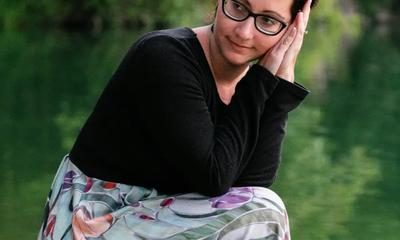Fashion
In a Beautiful New Book, the Complete History of Château Lafite Rothschild—the World’s Most Famous Wine
Saskia de Rothschild uses her training as a journalist to tell the story of her family’s estate….


FOR MORE THAN 150 YEARS, Rothschild-family members have been the stalwart stewards of the Médoc-region vineyards at Château Lafite Rothschild. As the story goes, Baron James de Rothschild—son of German Rothschild scion Mayer Amschel—purchased the vineyard in 1868, after being dispatched by his father from Frankfurt to Paris decades earlier. (Mayer Amschel placed all of his five sons in European cities to buttress the family’s banking empire.) By then, Château Lafite had already earned its reputation—appreciated by stately oenophiles like Thomas Jefferson and anointed the King’s Wine, owing to the Ancien Régime’s predilection.
James would die months after acquiring Château Lafite (whether he ever visited was long debated), and it has since been looked after by his male successors—until 2018, when then-31-year-old Saskia de Rothschild took over. Around that time, Saskia also began her research on Château Lafite: The Almanac (out in December from Rizzoli), a century-spanning family scrapbook documenting the science, history, and lore of the vineyard.
When we speak on the phone in early September, it’s the first day of harvest—before the annual blending process, this is the first major step in determining a vintage’s flavor. “I spent the morning with our team in the vineyard, tasting and deciding what plots we will harvest,” she says. “Each vintage is different depending on the climate—I have every type of weather app on my phone!”
Before the great-great-great-granddaughter of Baron James took over the historic estate, she worked as a journalist, filing stories for the New York Times and the French magazine Revue XXI, covering the experiences of inmates at a prison in Ivory Coast’s Abidjan or the first female U.S. Marines sent to Afghanistan’s front lines. She explains that while she had grown up helping at the vineyard, it was only after her father, Baron Éric, told her of his succession plan in 2016 that she received a more formal education in viticulture and oenology (the legal training required to run a vineyard). If Baron Éric ushered in the technology age with modernized production, and before him Saskia’s great-uncle Baron Elie oversaw Lafite’s reconstruction following World War II, her era is one of safekeeping—maintaining the cyclical ceremony of winemaking in the face of global warming and erratic weather patterns. “How do we protect a centuries-old balance that has enabled us to produce great wines?” she writes in the book.
Fashion
Raekwon Unveils “The Emperor’s New Clothes” With All-Star Lineup

Raekwon, a legendary rapper known for his role in the Wu-Tang Clan, has just announced his long-awaited eighth studio album, titled “The Emperor’s New Clothes,” set to be released through Mass Appeal. Although no singles have been shared yet, the album is already creating a buzz and is highly anticipated this summer. It’s been seven years since Raekwon last released a solo album, and this new project feels more like a grand return than just another release.
He’s teamed up with a mix of familiar faces from the Wu-Tang Clan and some fresh talent in hip-hop. Listeners can look forward to clever lyrics and captivating stories filled with raw emotion. Raekwon has invited his Wu-Tang brothers Ghostface Killah, Method Man, and Inspectah Deck to feature on the album, ensuring a classic blend that fans love. He’s also brought in well-respected artists outside of the Wu-Tang family, like Nas and members of the Griselda collective, Westside Gunn, Benny The Butcher, and Conway The Machine, who are known for their gritty style.
Adding to the variety, singers Stacy Barthe and Marsha Ambrosius will provide soulful vocals to complement Raekwon’s hard-hitting verses. The album’s production features talented names like Swizz Beatz, Nottz, J.U.S.T.I.C.E League, Frank G, and Roadsart, promising a rich, cinematic sound that matches Raekwon’s lyrical skills. Even with such an impressive lineup, there’s still a sense of mystery around the album. There have been no early songs or previews released, just the announcement itself, which builds even more expectation.
But for Raekwon, this is part of his journey. He has always delivered powerful lyrics and relatable street stories without much introduction. The title, The Emperor’s New Clothes, suggests a fresh start and a daring vision that might challenge the current state of rap. With his experienced flow and storytelling still sharp, Raekwon seems prepared to reestablish his place among the top artists in hip-hop.
Fashion
Wendy Williams Makes Stylish Splash At Columbia Supporting Her Designer

In a delightful surprise for fans and fashion enthusiasts, Wendy Williams made a rare appearance at Columbia University on Tuesday, and everyone couldn’t help but notice her. The former talk show host was in high spirits as she showed up to support her longtime friend and fashion designer, Mel Maxi. Wendy looked fantastic in a stylish black-and-white outfit that included a Yankee hat and her trademark flair.
Designed by Maxi himself, her outfit was not just chic but also had a personal touch that highlighted her vibrant personality. In a heartwarming moment recorded on video, Wendy told Maxi, “This is amazing! This was specifically designed for me… this is really hand done.” Wendy came to cheer on Maxi, who was set to give a lecture about fashion design at the prestigious university. Her appearance was a meaningful moment between two creative friends who have supported each other for years. Wendy’s presence emphasized the importance of friendship and collaboration in the creative world.
As she walked by, a nearby fan shouted their love for Wendy, and she instinctively responded with her signature warmth and enthusiasm: “Thank you!” she exclaimed with a big smile. After being away from the spotlight for months, Wendy’s visit was a refreshing change for fans who have missed her lively spirit. There were no fancy events or flashing cameras, just Wendy enjoying the moment, supporting a friend, and reminding us all of the significance of showing up for the people we care about.
-

 Artist Spotlight4 days ago
Artist Spotlight4 days agoHope Easton channels tropical mischief and charm in new single “SexyReady”
-

 Artist Spotlight4 days ago
Artist Spotlight4 days agoSweetCandy! declares self-love and defiance on “UGLY”
-

 Artist Spotlight4 days ago
Artist Spotlight4 days agoBluntBrad Jr. finds calm ambition in the laid-back shine of “It’s All Good”
-

 Artist Spotlight4 days ago
Artist Spotlight4 days agoLavien drops a heartfelt Afrofusion plea that sticks to the soul with “Nobody”
-

 Artist Spotlight3 days ago
Artist Spotlight3 days agoLana Crow turns challenges into a celebration with “Laugh With You”
-

 Artist Spotlight5 days ago
Artist Spotlight5 days agoCircleKSK ignites an anime-metal collision on “UnBreakable Turn” ft. Anya J
-

 Artist Spotlight5 days ago
Artist Spotlight5 days agoRecc explores nostalgia and inner freedom in “Where the Wild thYngs Are”
-

 Artist Spotlight5 days ago
Artist Spotlight5 days agoAnnaBelle Swift delivers gentle hope and gratitude with new single “Heaven Sent”


